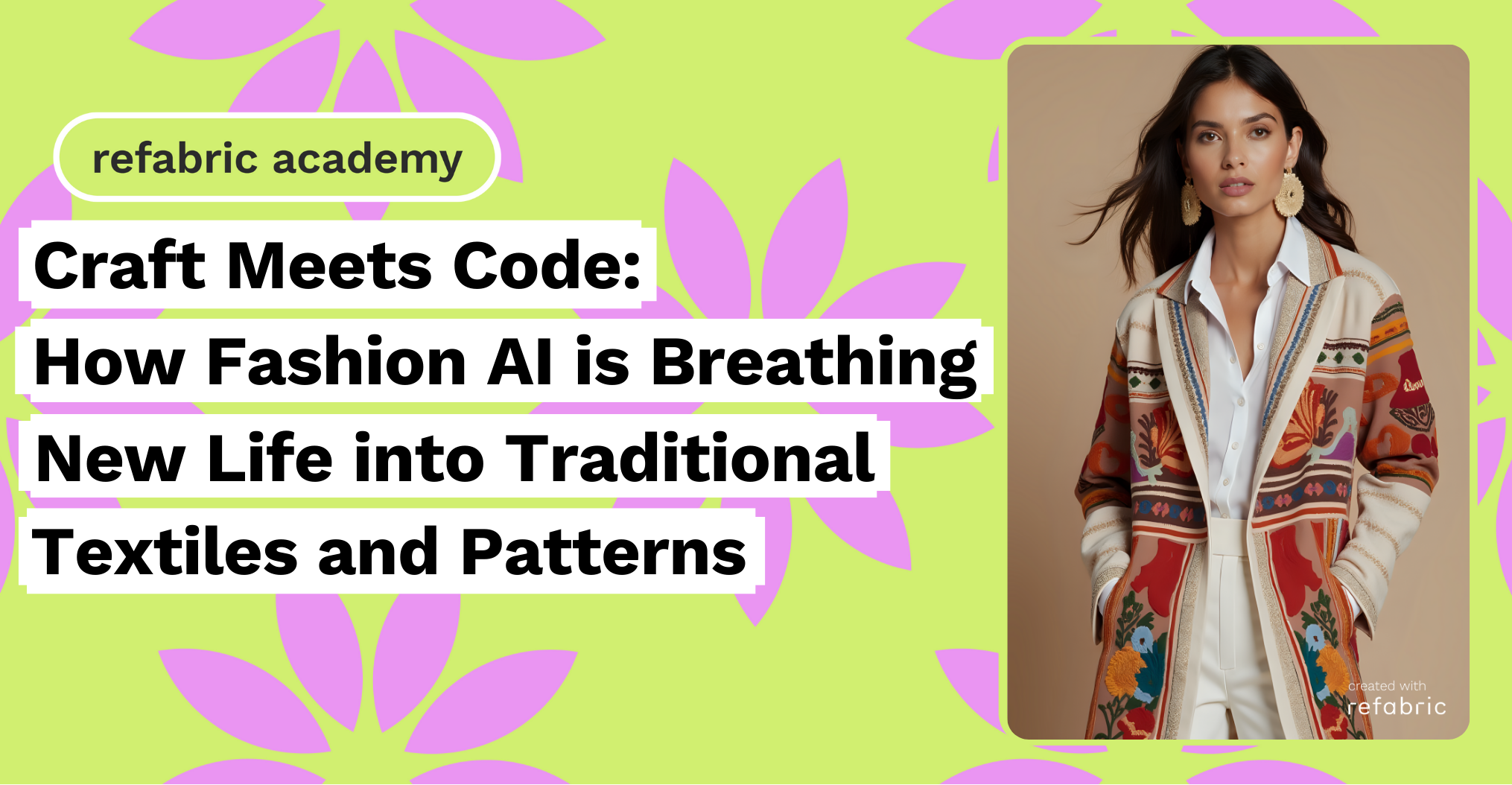In a world where technology and tradition often seem at odds, the fusion of fashion AI with cultural craftsmanship is forging an inspiring new narrative. This symbiotic relationship is not only preserving heritage but also revitalizing it for modern audiences. Fashion AI tools have begun reinterpreting traditional textiles and patterns, blending their cultural significance with cutting-edge design capabilities to create collections that are both contemporary and deeply rooted in history.
Tradition Meets Technology
For centuries, textiles have been an essential form of storytelling, with weaves, dyes, and motifs reflecting the cultural identities of the communities that crafted them. From Japanese kimonos adorned with intricate floral embroidery to Turkish kilim rugs bearing geometric patterns, these designs encapsulate centuries of heritage. However, as fast fashion accelerates the loss of artisanal skills, many traditional patterns risk fading into obscurity.
Fashion AI offers a lifeline. Tools like Refabric’s AI-driven design suite allow designers to digitize traditional motifs, analyze their structure, and reinterpret them into fresh, modern contexts. By integrating fashion AI into the design process, brands can explore endless variations of these patterns while retaining their essence. This not only preserves traditional aesthetics but also expands their reach, making them accessible to global audiences.
Reinterpreting Cultural Patterns with Fashion AI
One of the most striking ways fashion AI is reshaping traditional patterns is through generative design. AI systems trained on cultural motifs, such as Indian paisley, African kente, or Nordic embroidery, can create unique interpretations that remain faithful to their origins.
Fashion AI also allows for unprecedented experimentation with scale, color, and texture. Traditional patterns, once confined to specific materials or techniques, can now be reimagined in fabrics ranging from sustainable organic cotton to high-tech performance materials. Designers can explore bolder palettes or intricate layering of patterns that would be challenging to achieve using traditional methods alone.
Bridging Heritage and Sustainability
Incorporating AI in fashion design also aligns with sustainability goals, a growing priority for both consumers and brands. Traditional textiles often rely on labor-intensive production processes and limited resources. AI streamlines these processes by simulating designs and patterns digitally, reducing the need for physical samples. For instance, Refabric’s fabric implementation tools can simulate the look and feel of handwoven fabrics, enabling designers to experiment without material waste.
Moreover, AI-powered tools can resurrect endangered crafts by archiving and digitizing them. Some platforms have begun using AI to document and reinterpret textile traditions from remote regions. This ensures that these patterns are not only preserved but also adapted to meet contemporary tastes, safeguarding their cultural legacy.
Global Collaboration and Cultural Exchange
The democratization of design is another significant advantage of fashion AI. Designers from diverse backgrounds can collaborate virtually, drawing inspiration from patterns across the globe. AI-driven platforms allow for seamless integration of cross-cultural influences, resulting in collections that celebrate a shared human heritage while respecting their unique origins.
Take, for example, the burgeoning interest in Latin American textile traditions, such as Peruvian Ayacucho embroidery. By utilizing AI tools, international designers can reinterpret these vibrant patterns into modern fashion collections, creating garments that appeal to both local and global audiences. This exchange not only amplifies the visibility of these crafts but also fosters mutual appreciation among cultures.
The Future of Fashion AI and Craftsmanship
As the fashion industry grapples with the need for innovation and sustainability, the integration of fashion AI into traditional craftsmanship represents a hopeful path forward. Tools like generative AI and machine learning are not replacing artisans but empowering them, offering new ways to preserve and evolve their craft. By marrying the precision of technology with the soul of tradition, fashion AI ensures that cultural patterns continue to inspire future generations.
The possibilities are endless. Imagine a future where an artisan in Morocco can use fashion AI to adapt their ancestral designs for luxury ready-to-wear collections in Paris, or where a student in Tokyo can collaborate with AI to reinvent ancient motifs into sustainable streetwear. The convergence of craft and code is not just a technological innovation; it is a cultural renaissance.
In this ever-evolving landscape, fashion AI serves as both a bridge and a catalyst, connecting the past with the present and offering a glimpse into a more inclusive, creative, and sustainable future. By breathing new life into traditional textiles and patterns, it is clear that when craft meets code, both tradition and technology flourish together.
